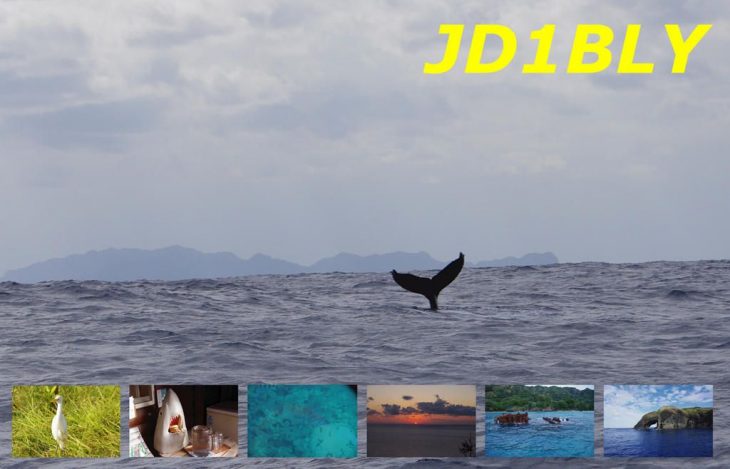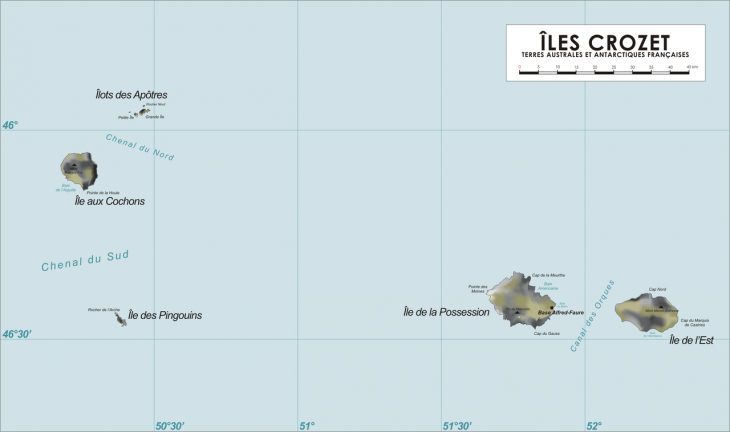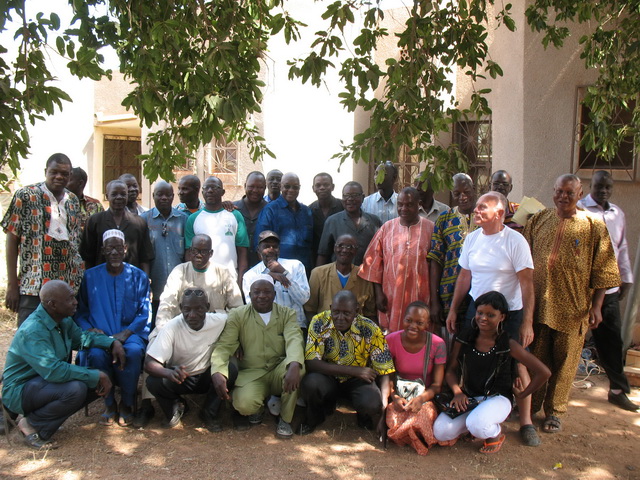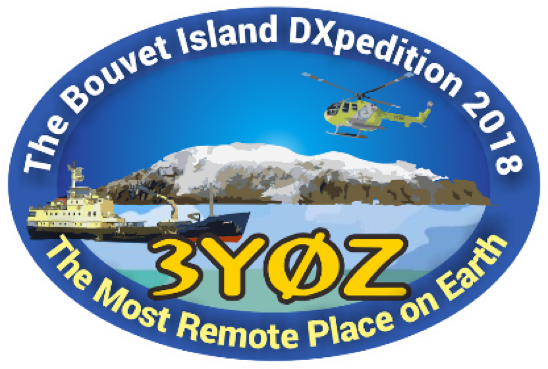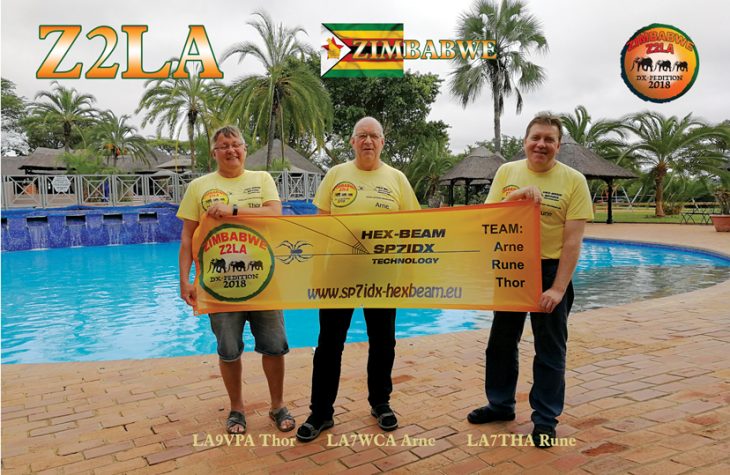Author - Charles M0OXO
A75GR Qatar
QSL Cards are now printing at UX5UO Print Shop. Logs and OQRS will be open as soon as I receive a full logbook from Rasto A75GR.
https://www.m0oxo.com/oqrs/logsearch.php
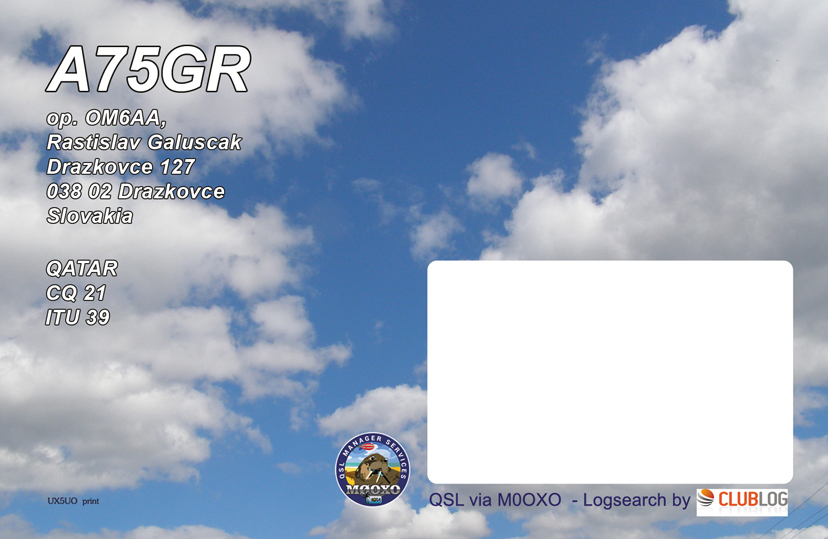
Happy St. Patrick’s Day from the EIDX Group!!
Our Team are almost ready for our second large scale Dxpedition following on from our successful trip to Nepal last Year. The team are all well motivated and begin their travels to Malawi later this week.
They will arrive at Annie’s Lodge in Malawi on Friday evening the 23rd March. If all goes to schedule the team will be qrv in the CQ WPX Contest certainly by Saturday morning and dependent on how rough the journey was, maybe even Friday Night..Keep an eye out on this Blog and our website for news as our DXpedition gets underway.
See you on the air!

JI5RPT will be active again as JD1BLY, from Chichi Jima Island, IOTA AS-031, Ogasawara Islands.
He will be operate between the 2nd and 4th May 2018 on HF Bands plus 6m, CW, SSB, Digital modes.
QSL via his home call
With the exception of Clipperton, these other sensitive territories are administered by the Prefecture of the French Southern and Antarctic Lands (TAAF in French). For the TAAF it is a question of managing the logistics around these isolated territories, to support scientific missions and research, to protect ecosystems and safeguard biodiversity, and finally to manage in a sustainable way natural resources such as fishing. Any access to the islands named above is therefore subject to prior authorization.
It would be interesting to go back to the “amateur radio” history of each of these Scattered and southern islands but we will limit ourselves to the last 20 to 30 years. In the past, radio amateurs had the chance to regularly contact the Météo-France personnel deployed on the Scattered Islands. These were then stationed for several months each year and were in charge of the maintenance of the weather stations. All the islands except Tromelin hosted (and still do) French military troops including radio amateurs who provided some contacts during their free time. When it comes to the French Southern Territories, it was mostly radio operators located on the bases. Military personnel or scientists stationed for several months made radio contacts when off duty.
Since the 2000s, the almost permanent presence of radio amateurs for decades on all islands has gone down for various reasons: automation of weather stations, establishment of satellite links, gradual disappearance of HF links, decrease of radio amateurs among the deployed military…
In order to give the greatest number of people an opportunity to contact these territories, several amateur radio expeditions have been successfully organized and conducted: Amsterdam (1998) and Tromelin (2000) by the Lyon DX Gang and the Gendarmerie de Bron, Europa (2003) and Glorioso (2008) by a French military team thanks to Didier F5OGL, Amsterdam (2014) by Ralph K0IR and his team, and finally Tromelin (2014) and Juan de Nova (2016) by my team.
Over the course of the expeditions and the years, the rarity of these entities evolves. The most rare and sought-after contacts are to date those with Crozet which shares the top places of the ranking of the most wanted entities with North Korea and Bouvet. Never has any dedicated expedition been conducted there. The last scientists who made contacts are Florentin F4DYM-FT5WO, Nicolas F4EGX-FT1WM-FT1WK and Jean-Paul F5BU-FT5WJ, but the demand is such that despite their efforts, the need for an expedition remains intact. The island of Crozet is the most protected of all the French islands in the perimeter of the TAAF. It has always been the subject of special attention and has a relatively low rate of invasive alien animal or plant species. This makes it particularly sensitive to any new introduction. The scientific base is relatively small compared to the other Southern Islands and has a very high concentration of seabirds sensitive to disturbance nearby.
You now know what kind of context we are dealing with. No doubt that the DXpedition enthusiasts were already aware of these elements, but it was important to remind all of you so that everyone understands the content of this communiqué.
The last three expeditions (FT5ZM, FT4TA and FT4JA) are those known to the current authorities. Beyond the amateur radio community, their success has been recognized by the TAAF. This point is extremely important in many aspects and has systematically conditioned the validation of the next expedition. The impression left by these projects is unanimously very positive. Our professionalism, our ability to respect the rules, and finally our ability to bring elements beyond the “radio” aspect were evaluated. For this last point, we collaborated with schools and generated exciting exchanges with the students and their teachers, communicated massively through different media on the islands, their history / geography, put together beautiful philatelic activities, put forward the work and the missions of the TAAF in the four corners of the world through articles and conferences organized on several continents. We have also shown our full potential to conduct expeditions in total respect of the host territories, and this is undoubtedly the most important.
Based on these experiences and the very good relationship with the TAAF, we worked in parallel on two new destinations as soon as we returned from Juan de Nova: Grande Glorieuse Island (FT/G) and Crozet (FT/W). Quickly, we were faced with the risk of collision with antennas for bird populations, as well as the difficulty of verifying the respect of bio-protection measures around our projects. These risks were part of our specifications during our previous operations, and each time we showed our common ability to find appropriate solutions, our team often going beyond the conditions imposed.
A new evaluation was conducted for over a year to propose new technical, logistical and organizational solutions to bring these subjects under control. Numerous research projects, supported by several notes from expert scientists, have ruled out the risk presented by our modest antennas on the bird populations of these territories. Passionate about our islands for decades, we are the first to pay special attention to the protection of fauna and flora and it seems clear to us that our projects are completely respectful of these territories and their biodiversity.
Despite the research work done, the innovative solutions proposed, and a complete and documented dossier, our requests were rejected. The arguments put forward focus on the danger posed by our antennas for the bird population and the risk of introduction of new species during our landing. Despite our work to demonstrate that these elements are controlled and in no way invalidate our activities, it is the precautionary principle that is privileged for the moment. The logic remains to say that if there is no project then there is no risk. Unfortunately, amateur radio expeditions are not part of the core activities and priorities.
Of course, we acknowledge the position of the authorities in charge who undoubtedly rely on the expertise of their various departments. Let’s hope that the months or years ahead will allow us, through dialogue, to find compromises and propose new projects on a win-win basis as it has been the case so far.
To this day, the frustration is of course great as we worked hard countless hours. However, we will continue in a professional manner to deal with our interlocutors. We will continue our research to improve our solutions and make them even more compatible with the constraints imposed so far. Radio amateurs have had the chance to accompany and participate in the life of the bases for more than 60 years. We are therefore convinced of our legitimacy in the Scattered and Southern Territories, as well as in the ability of the TAAF to maintain a framework for our activity.
Many of you send me emails asking “when will Crozet take place? ” or ” when will Glorioso take place? “. Let’s hope that this communiqué is going to give you a better idea of our current projects. My goal is not to exchange ideas. No need to contact me to ask me more questions or give me your opinion, I may not have time to answer you.
It is also not a communiqué to tell you not to try to propose an alternative project to the competent authorities. As of today the chances of moving forward are slim. The administration has already received a number of cases in recent years, more or less serious, and I personally think that has made things more confusing and has not made our case.
I imagine that many will be disappointed with this information. We definitely are too. But we want to remain very positive and above all satisfied with the projects carried out towards Tromelin and Juan de Nova. We are aware of the privilege we have had. The work done with the various TAAF services to date has been fascinating. We have met people who live their missions with a passion and it is with great pleasure that we will perhaps work with them again in the future; it is our dearest wish.
For the time being, patience is the keyword…
73’s de Seb-F5UFX
Harald DFWO will be back in Burking Faso in a few days and again operating as XT2AW
He will be using his Hexbeam and Radio Power on CW, SSB and Digital Modes, favouring FT8.
He will be QRV from the 19th March until the 15th of April 2018.
Qsl as always via M0OXO
NASA – National Aeronautics and Space Administration added a new video: NASA Studies an Unusual Arctic Warming Event.
It’s midwinter in the Arctic, and the Sun has yet to rise over the North Pole. But the Arctic is unusually warm for this time of year. To understand this unusual arctic warming event we enlisted Earth satellite data and our Icebridge mission.
Click image for more information and to see the Video.
FOR IMMEDIATE RELEASE
The Bouvet Island DXpedition – 3YØZ
The 3YØZ team members are safely home. We have been home about two weeks now, after 31 days aboard our vessel M/V Betanzos. We have been to Bouvet Island, and as a result, we have a better appreciation for the challenges we face. It is a dark, dismal and dangerous place. Yet, when the sun shines, it is magnificent.
The most difficult thing to reflect upon is the final day offshore, when we saw the island, crystal clear in calm winds, less than a mile away. The conditions were perfect for our first reconnaissance flight and possible landing of
men and camp infrastructure. But, during the violent night before, the Captain had made the decision to abort. In retrospect, his call was clairvoyant. The mechanical, propulsion failure on the ship that occurred would have
brought disaster, if it resulted in some of our men being stranded ashore.
We are sure you are wondering what happens now? Well, we are not the kind of people to give up. The same thing happened when we were trying to activate Peter I in 2005. We came back the following year and with DAP’s
(the vessel owner) help, we got it done.
We are optimistic about a fair settlement and a resulting refund of some of our money paid to DAP for this recent attempt to activate Bouvet. That money, and what we still have in the bank will allow us to begin making plans to try again. We have begun the difficult task of looking for a suitable vessel, and would hope to go back to Bouvet in the next year or two. Obviously, we will keep you informed.
Thank you for the hundreds of favorable and encouraging comments from our financial supporters and sponsors. No one has asked for any of their contributions back, and, in fact, many have offered additional support for the next chapter in this book. We are hopeful that those of you who have invested in this project will see fit to “roll over” your financial support to the next attempt.
So, if we can pull all the moving parts together, we are going to try it again. Hopefully, this time, with a different outcome.
73,
Bob, K4UEE
What does Jupiter’s twilight zone look like? To make features more visible in this region where day meets night, NASA’s Juno Mission to Jupiter took multiple photos at different exposures.
In order to collect enough light to reveal features in Jupiter’s dark twilight zone, the much brighter illuminated day-side of Jupiter becomes overexposed with the higher exposure.
Discover more: http://go.nasa.gov/2tgtth3
It won’t be long now before the Norweigen Team set off to operate as Z2LA from Zimbabwe. The team will be active from 160m through 10m band on SSB and CW.
The operation will be in holiday style from 2 – 11 march 2018.
The crew is LA7THA Rune, LA7WCA Arne and LA9VPA Thor.
The equipment:
1 SUNSDR PRO II
1 Elecraft KX3
1 Icom 706 MK2G as spare radio
2 x Juma 1000 amplifiers
TX Antenna:
Inv L antenna for 160 and 80m
Slooping dipole antennas for 30/40m
20 to 10m band inc varc Hexbeam from SP7IDX Technology
RX antenna:
1 SAL 30
2 x reversible BEV antenna from remoteqth.com
1 BOG from K1FZ
If you want to support us you can do it by Paypal to Z2LA




